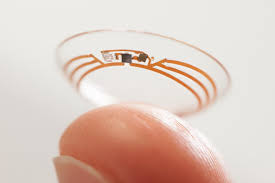
Breaking News
 Joe Rogan Criticizes The Harsh Tactics Of ICE: Here's Why He's Wrong
Joe Rogan Criticizes The Harsh Tactics Of ICE: Here's Why He's Wrong
 Stablecoins Could Increase Treasury Demand, but Only by Reducing Demand for Other Assets
Stablecoins Could Increase Treasury Demand, but Only by Reducing Demand for Other Assets
 $150 CNC Plasma Table Build for Your Garage Easy Quick and Very Cost Effective
$150 CNC Plasma Table Build for Your Garage Easy Quick and Very Cost Effective
Top Tech News
 3D Printed Aluminum Alloy Sets Strength Record on Path to Lighter Aircraft Systems
3D Printed Aluminum Alloy Sets Strength Record on Path to Lighter Aircraft Systems
 Big Brother just got an upgrade.
Big Brother just got an upgrade.
SEMI-NEWS/SEMI-SATIRE: October 12, 2025 Edition
 Stem Cell Breakthrough for People with Parkinson's
Stem Cell Breakthrough for People with Parkinson's
 Linux Will Work For You. Time to Dump Windows 10. And Don't Bother with Windows 11
Linux Will Work For You. Time to Dump Windows 10. And Don't Bother with Windows 11
 XAI Using $18 Billion to Get 300,000 More Nvidia B200 Chips
XAI Using $18 Billion to Get 300,000 More Nvidia B200 Chips
 Immortal Monkeys? Not Quite, But Scientists Just Reversed Aging With 'Super' Stem Cells
Immortal Monkeys? Not Quite, But Scientists Just Reversed Aging With 'Super' Stem Cells
 ICE To Buy Tool That Tracks Locations Of Hundreds Of Millions Of Phones Every Day
ICE To Buy Tool That Tracks Locations Of Hundreds Of Millions Of Phones Every Day
 Yixiang 16kWh Battery For $1,920!? New Design!
Yixiang 16kWh Battery For $1,920!? New Design!
 Find a COMPATIBLE Linux Computer for $200+: Roadmap to Linux. Part 1
Find a COMPATIBLE Linux Computer for $200+: Roadmap to Linux. Part 1
Smart contacts: The future of the wearable you won't even see

Material science and our understanding of the human eye have come a long way since, while their purpose has remained largely the same. In the age of wearable computers, however, scientists in the laboratories of DARPA, Google, and universities around the world see contact lenses not just as tools to improve our vision, but as opportunities to augment the human experience. But how? And why?
As a soft, transparent disc of plastic and silicone that you wear on your eyeball, a contact lens may seem like a very bad place to put electronics. But if you look beneath the surface, the idea of a smart contact lens has real merit, and that begins with its potential to improve our well-being.
A picture of health
Over the past decade or so, scientists have made great advances with technologies that can provide different measures of our health by sampling our bodily fluid. Sweat is a great example of this. Researchers around the world are working on patches equipped with sensors and electronics that can be worn on the skin to analyze the makeup of our sweat, working out which chemicals are present and which ones are not.

 WTF Is Going On...
WTF Is Going On...

